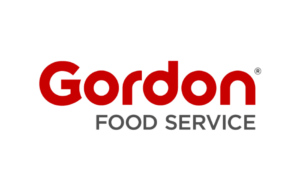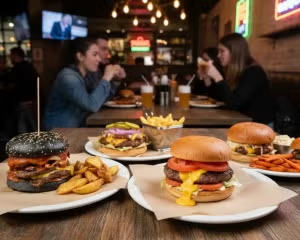Labour shortages, market conditions and transportation all play a role.
The weekend’s near, and your restaurant’s bottomless bucket special on breaded, fried shrimp is in peril. A temporary product shortage means no delivery until next week—if labour, manufacturing and transportation function smoothly. The supply chain challenge is real.
Product availability is limited by weak links at every level. It happens before vendor production with lack of availability or lead times on ingredients. It happens in packaging and transportation before products even get to vendors. It snowballs from there to vendor production to warehousing to trucking. Labour shortages throughout the industry are affecting everyone in some way.
Add in the pandemic-fueled desire for certain items, and the problem compounds. Short supply. High demand. Increased prices. It’s a recipe for headaches.
Everyone is experiencing pain, most visibly foodservice operators struggling to maintain profitability, menu consistency and guest satisfaction. To address restaurant operators’ questions, two Gordon Food Service experts—Todd Baker, Executive Vice President, North America Merchandising, and Brad Reynolds, Senior Director, North America Procurement—offered explanations:
Why is the supply chain broken?
First of all, foodservice customers should know Gordon Food Service and all distributors and manufacturers are fighting the same supply chain battles. It plays out differently in different places, but our situations are all similar.
At the apex of the problem is labour. It’s a problem in both the U.S. and Canada. Suppliers are in a less-efficient model than before the pandemic. Without labour, they aren’t able to get as much throughput. Some suppliers are unable to obtain equipment and make process improvements right now, so they’re trying to throw more labour at their manufacturing to get the most out of what they have. There’s also labour shortages in shipping of raw materials, warehouse systems, and delivery of finished products.
Product demand is another factor. With labour troubles of their own, restaurants have changed their menus. Suddenly, there’s an increased call for value-added products, like breaded, deep-fried appetizers. When everyone needs them at once, it can be a challenge even for a fully staffed and equipped vendor.
How else is the pandemic playing into shortages?
Because of safety concerns, many manufacturers have implemented social distancing or limited shift sizes on their production floor. Also, every now and then a covid outbreak will slow or stop production and output for a period of time. It puts a challenge in the supply chain for a couple of weeks, and it’s very unpredictable.
The return of school and healthcare foodservice on a larger scale than we’ve experienced over the past 18 months is adding more demands. Many schools have switched from tray service to packaged containers, and healthcare is using more to-go products, so that has taken a bite out of restaurant takeout materials.
Which products are affected?
Depending on the week, different items are a challenge. You can see that on a trip to the grocery store. For our restaurant customers, three areas are hurting most:
- Grab-and-go items. Everything from grab-and-go beverages like Gatorade to individually-wrapped or packaged items. Demand for ketchup packs is unprecedented compared to 2019, and we’re reaching out to a lot of suppliers to provide them.
- Takeout packaging. Orders for plastic cutlery, cutlery kits, drink cups and foam containers are up exponentially. Everyone is calling for more to-go containers.
- Value-added products. Things like chicken tenders or breaded and deep-fried appetizers. For manufacturers, those are very labour-intensive.
What can restaurants do?
The best solution for finding alternative products is to work closely with your Sales Representative. Our category team is working daily on product availability and substitutions. For some items, it’s a demand issue, for other items it’s a manufacturing issue, for some it’s a transportation issue, so it varies from area to area.
We’re really trying to equip our team with information. The most important thing, from end to end, is the thread of communication. We count on our customers to communicate their needs and be somewhat flexible through all the chaos. Is there a substitute product that will work? You may not want to use an alternate product, but if you can for 60 days, that kind of flexibility will help everyone get through this together.
When will things get better?
We may be at least six months out from seeing decent improvements. There are some lights at the end of the tunnel. Some of our suppliers have been working to add lines and reach capacity.
Across the U.S. and Canada, some areas are being hit harder than others, and we are working on solutions for each one.










